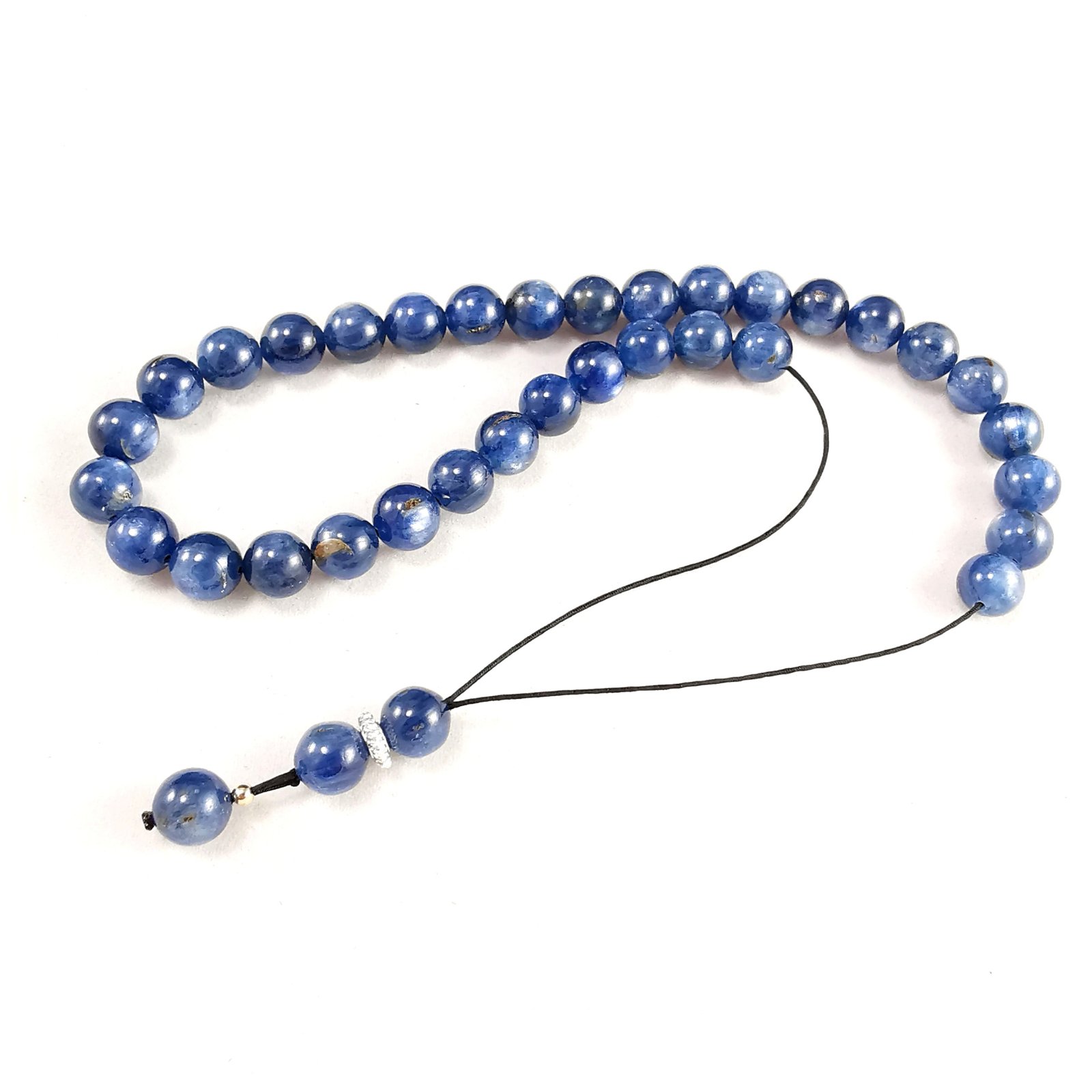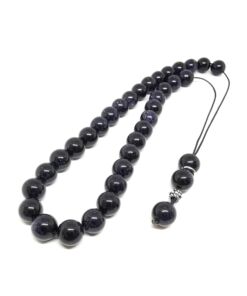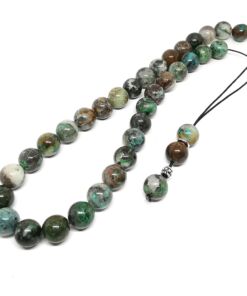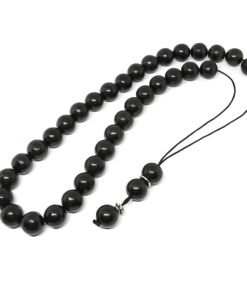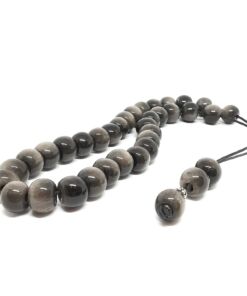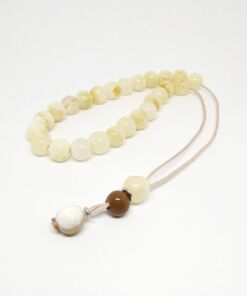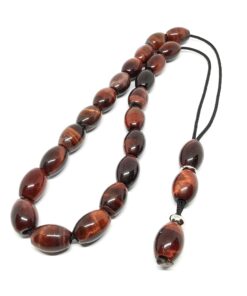Kyanite Komboloi AC0119
Kyanite komboloi, 5A grade, sourced from Canada. Features gold and silver details, threaded on a highly durable cord.
It is 29 cm long and weighs 69 gr.
It comes with a certificate of authenticity.
The photo may not represent 100% of the product features.
Original price was: 890,00 €.790,00 €Current price is: 790,00 €.
In stock
Kyanite is a rare and exceptionally beautiful gemstone, renowned for its vivid blue colour, often reminiscent of sapphire. It belongs to the aluminosilicate mineral group and typically forms in metamorphic rocks such as schists and gneisses. Depending on the mining location, it may appear in a range of hues, from pale blue to deep navy, and more rarely in green or orange tones.
Properties and Characteristics
Kyanite has a unique crystal structure that gives it hardness anisotropy, meaning its hardness varies depending on the direction in which it is cut.
It is commonly used in jewellery making, although its brittleness makes it challenging to work with.
It is believed to enhance mental clarity and focus.
Kyanite pricing is determined per carat.
Unlike other precious gemstones such as diamonds, kyanite does not follow a fixed global pricing system per carat. Its value depends primarily on factors such as:
Colour and saturation – Deeper, more vibrant blues are considered more valuable.
Clarity and transparency – Fewer inclusions typically result in a higher price.
Cut and craftsmanship – Well-cut stones are priced higher.
Rarity of hue – Green and orange kyanites are rarer and often more expensive.
Origin – Kyanites from Nepal and Canada are usually valued more highly.
All minerals used for the creation of our kombolois are mostly gemstones used to craft jewelry. Handle this komboloi with care. Inclusions, cracks and breakage surfaces are a natural phenomenon and should never be associated with wear and tear.
| Precious Stones | Cyanite |
|---|


